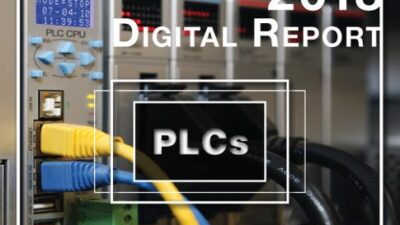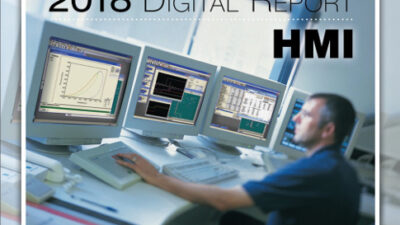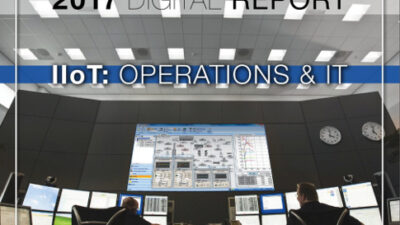Billions of dollars will be saved, according to some, when information more easily transfers among various stages of design, prototyping, inspection, and manufacturing.
Billions of dollars will be saved, according to some, when information more easily transfers among various stages of design, prototyping, inspection, and manufacturing. Six vendors’ software packages operated three coordinate measuring machines (CMMs) in an April 19 demonstration at Quality Expo in Rosemont, IL, in another step toward increased information interoperability. The Automotive Industry Action Group (AIAG) estimates an approximate $600 million annual loss to build and rebuild just measurement programs for different systems, because software from one cannot interoperate among machines without custom code.
In June, AIAG plans to release a common global language specification for metrology system interfaces, called dimensional markup language (DML). AIAG developed DML with the U.S. National Institute of Standards and Technology (NIST), automakers, and equipment and software vendors. DML aims to help connect different measuring components from various systems within a plug-and-play environment. DML specification is one part of a broader AIAG effort supporting open interface standards that efficiently communicate metrology information. The demonstration also used the I++DME open standard, a broader specification involving the I++DME Group (DaimlerChrysler Corp., Volkswagen, BMW, Audi, and Volvo), the International Association of Coordinate Measuring Machine Manufacturers (IA.CMM), AIAG, and NIST.
| Diagram shows a demonstration of software/CMM interoperability at the Control 2005 show in Sinsheim, Germany, April 26-29. This involves different vendors and adds a fourth CMM, compared to a similar demo near Chicago on April 19. |
The real-time demonstration showed part inspection with touch-trigger probing, scanning, part alignment, and tool changing, by using software from LK, Metrologic, Metromec, Tecnomatix, Wilcox Associates, and Zeiss with CMMs from Wenzel, Xspect Solutions, and Zeiss. The demo also transferred part geometry and feature tolerance information from the software to analysis software from Dimensional Control Systems, Tecnomatix, and Mitutoyo.
DaimlerChrysler’s Robert D. Waite (manager, advanced metrology group, vehicle build and shop services, scientific labs and proving grounds) has been actively involved in the effort. Waite, in a conference panel prior to the demo, said automakers and other users need best of class products, improved prices, and easy data integration and storage where information can be exchanged rather than re-entered. “When users and suppliers speak the same language, there’s more value for the user community,” Waite said. Some vendor representatives said they would benefit also, because of ability to concentrate on improving algorithms instead of code conversion.
Ford’s Glen Allan (supervisor, CMM/inspection department, dimensional control, new model programs development center) says the automobile industry incurs $1 billion in costs related to non-interoperable systems, such as data translation, inability to reuse existing data, lost quality, and delayed production. As fast as technology is changing, he suggests, “We need off-the-shelf interoperable solutions, not customized interfaces.”
Collaboration among companies and agencies produced “this important metrology interoperability standard,” says Chuck Koehn, AIAG acting executive director. Hratch G. Semerjian, acting director of NIST, adds, “AIAG and NIST, working together to address a billion-dollar plus interoperability issue, demonstrate an industry-government partnership where everyone benefits.” Automotive industry uses metrology to improve dimensional integrity in vehicles; lowering the cost of integrating proprietary dimensional measurement systems is a common goal. Original equipment manufacturers (OEMs) have been generally unable to require compliance to specific standards because either no standards were in place or no conformance tests existed to verify compliance to the standard, Semerjian suggested.
The organizations say CMM interoperability will:
-
Improve CMM efficiency, making each machine available to run a part program at any time, regardless of where the part program originated;
-
Reduce programming training costs; improve programming skills by concentrating on one system;
-
Eliminate expensive and complex translation programs;
-
Reduce maintenance costs;
-
Increase flexibility of use, in time and locations of available resources; and
-
Reduce overall manufacturing costs.
Other standards efforts underway include:
-
Geometry STEP 203 (also tolerance info);
-
Automotive design STEP 214;
-
Machining features STEP 224;
-
Inspection STEP 219 (about 12-18 months away from being ISO standard); and
-
NC info STEP 238 (proof of concept underway for milling and probing).
For more about STEP 238 and other efforts, see:
-
“ OMAC standards yield operational savings ”
-
“ STEP-NC prototype demos; ARC, OMAC meetings ”
—Mark T. Hoske, editor-in-chief, Control Engineering, [email protected]


